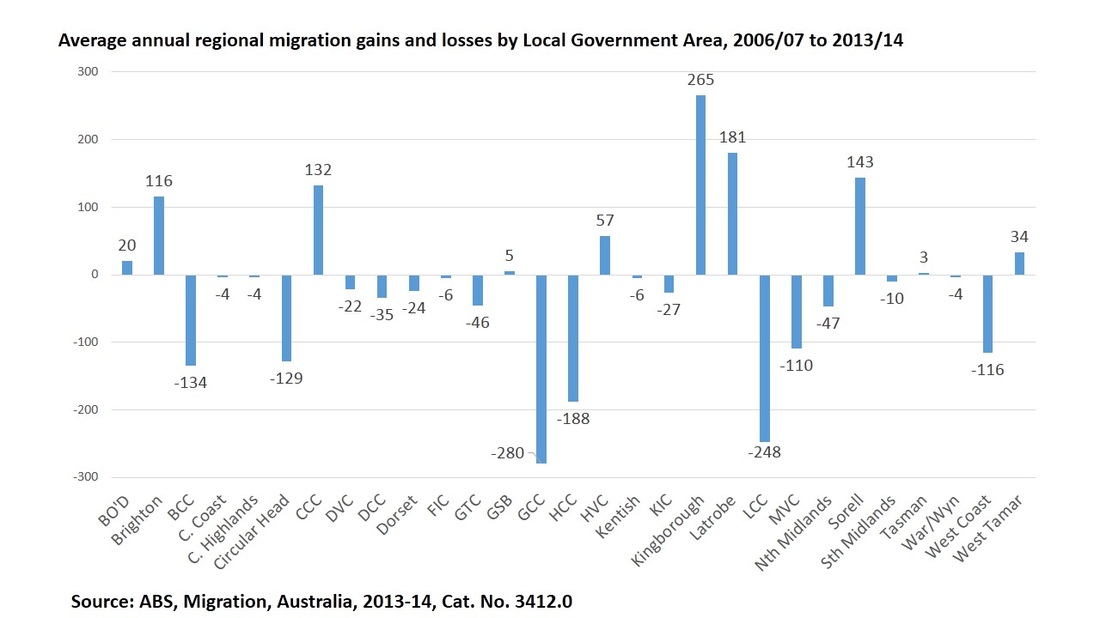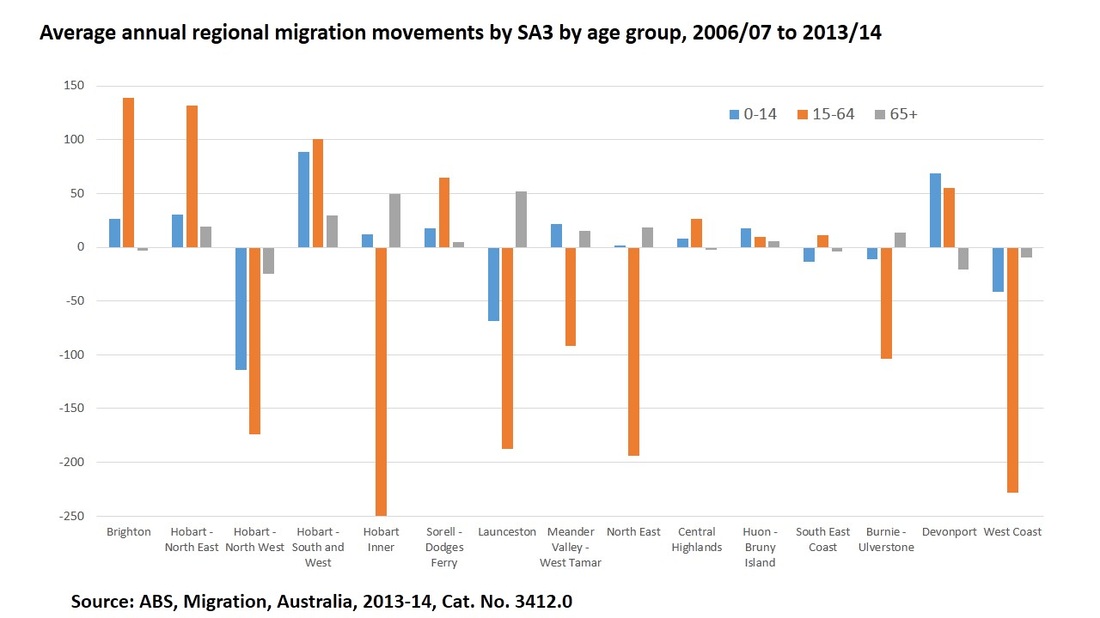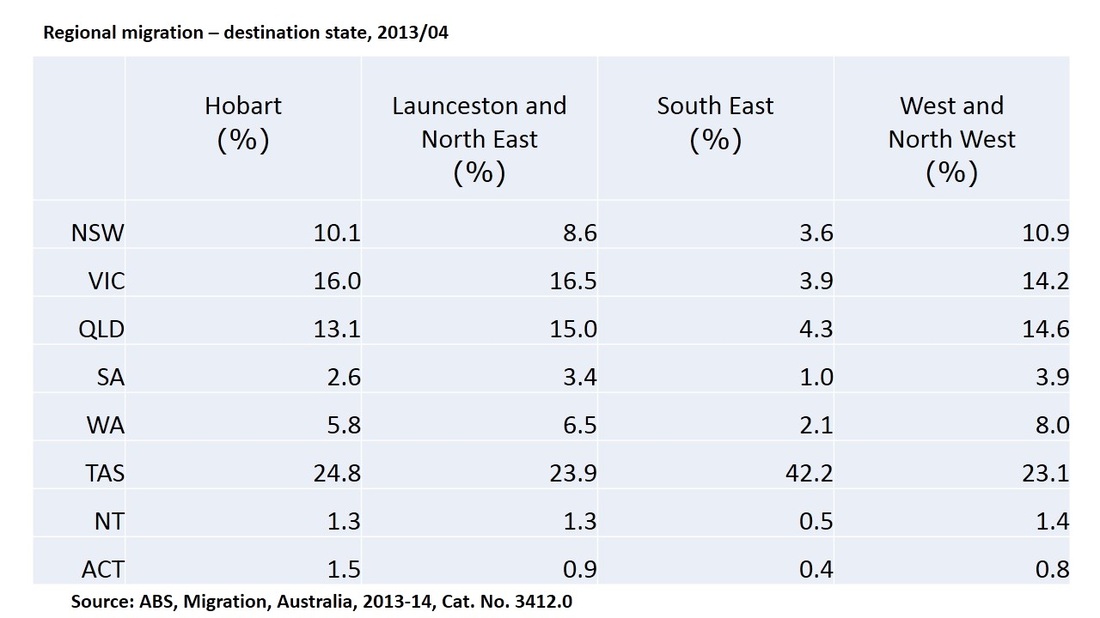Available data includes arrivals, departures and net movements by age and sex for various sub-state geographies (SA3, SA4 and LGA) for the years ending 30 June 2006/07 to 2013/14.
The new data provides for much greater insight and understanding of population movements in smaller areas than previously possible. This can be used to inform planning, provision of services (e.g. child care, schools, aged care, public transport etc) and investment in infrastructure (roads, community amenities, communications technology etc) much more effectively.
There is much that can be done with this data, so I just provide a quick snapshot using three different data sets.
The first data set provides estimates of arrivals, departures and net migration movements by local government area (LGA) for the 8 years from 2006/07 to 2013/14. The below figure shows the average annual net gains or losses for each LGA. The Glenorchy, Launceston and Hobart municipalities recorded the greatest average migration losses while the Kingborough, Latrobe and Sorell municipalities recorded the greatest average gains. This data is also available at the SA2 level, but given there are 98 SA2s, I have not presented the data here. However, this data would be particularly useful for local councils to gain a greater understanding of change within smaller areas of their municipalities.



